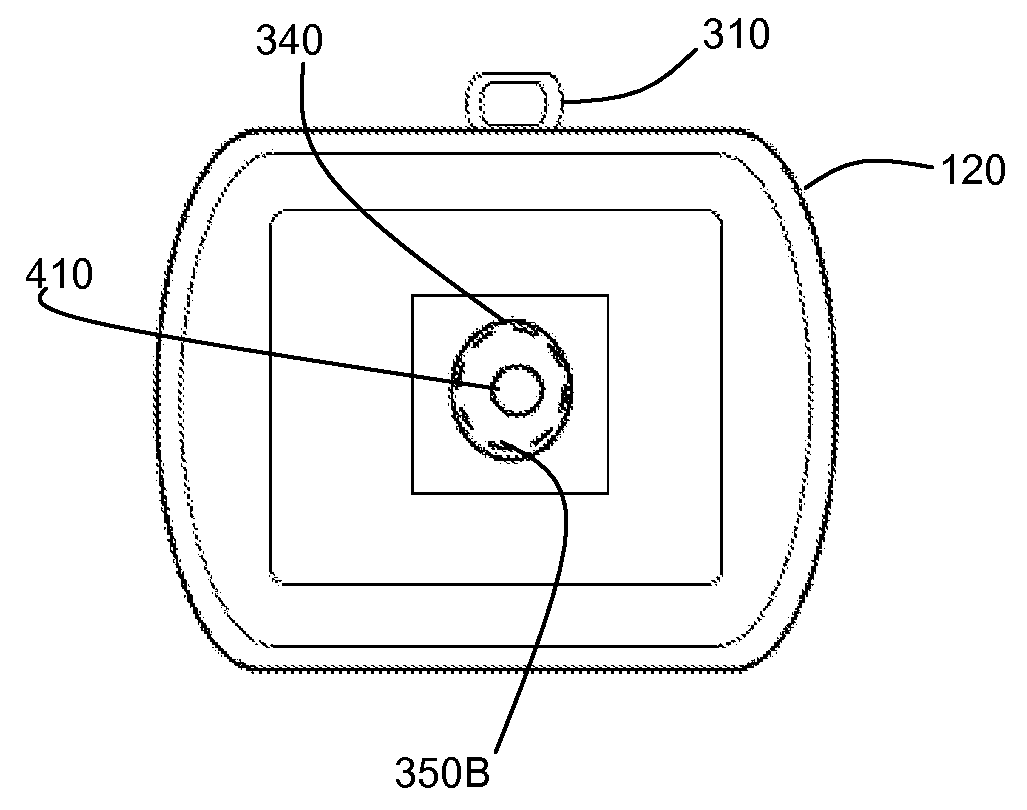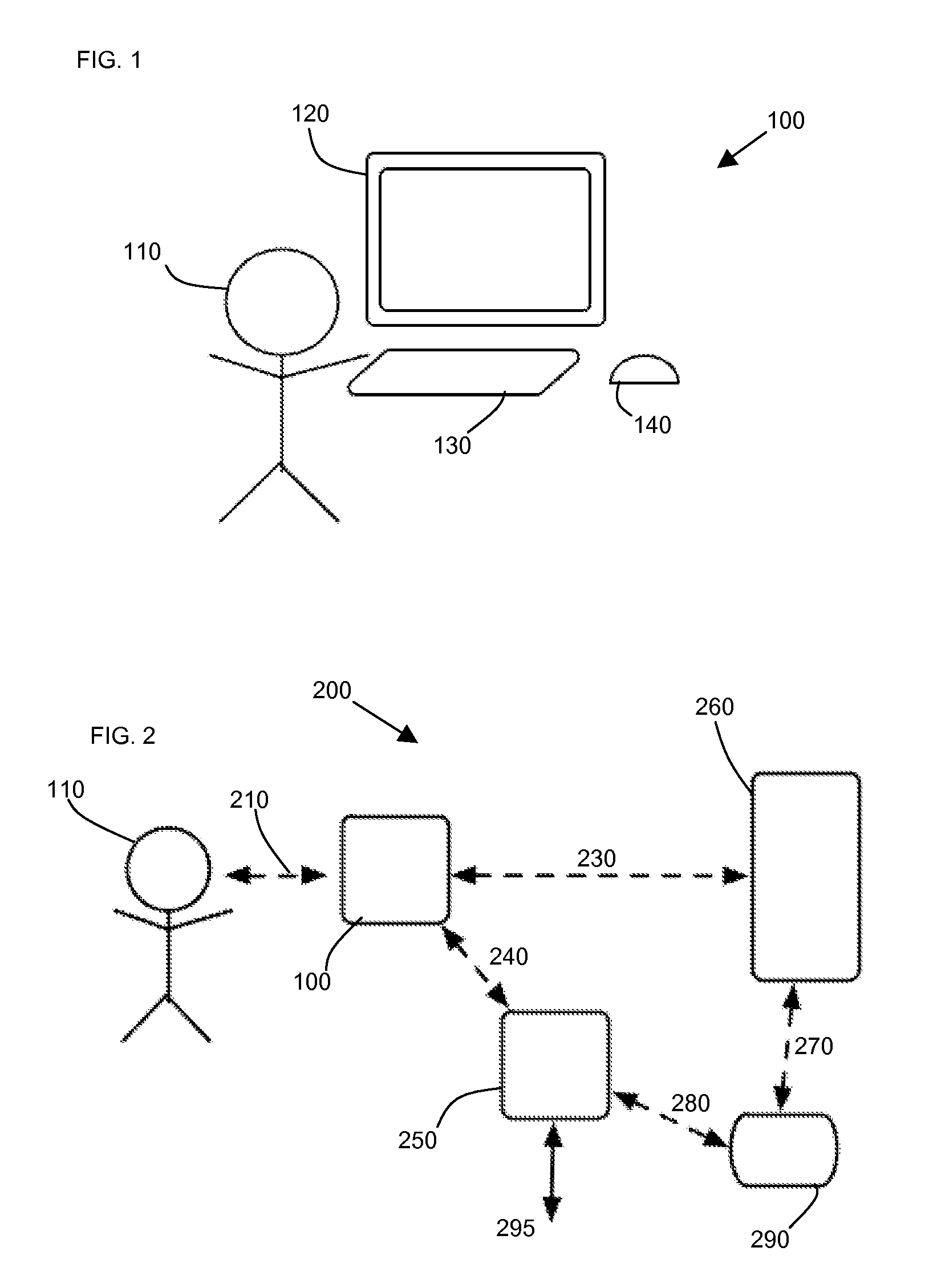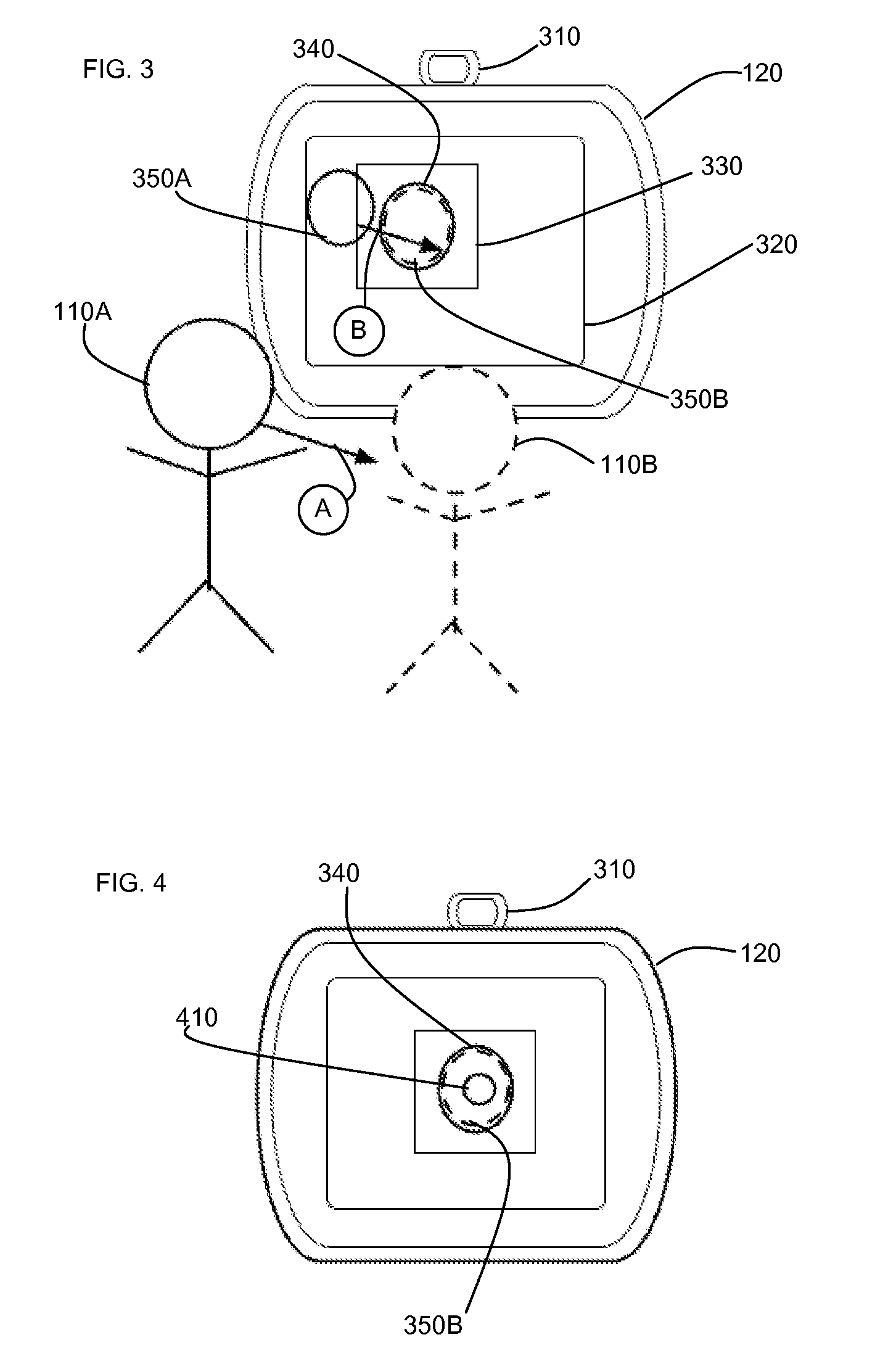Method and device of customizing headphones
a headphone and customizing technology, applied in the field of customizing, can solve the problems of physical ear fatigue, marginalized audio playback quality, and the failure of the “one-size-fits-all” headphone system to address the individuality of the listener
- Summary
- Abstract
- Description
- Claims
- Application Information
AI Technical Summary
Problems solved by technology
Method used
Image
Examples
examples of exemplary embodiments
[0048]FIG. 1 is an illustration of an example of a user interactive system 100 that can be used to implement at least one exemplary embodiment. A user 110 can interface 130 (e.g., keyboard) and 140 (e.g., mouse) with a computer 120 (e.g., Macintosh, PC), to enter data for customizing a product.
[0049]FIG. 2 is a block diagram of elements associated with a method in accordance with at least one exemplary embodiment. A user 110 interfaces 210 with a software program (either locally or web based) on an interactive system 100. The user can enter membership information (e.g., ID number) or start registering, where the registration query or new information is sent 230 (e.g., via cable or wireless) to a database 260 (local or remote). The registration data can be retrieved later for verification of registration, and upon verification retrieve any useful data needed for customization (e.g., preferences, physiological data). Additionally an order signal can be sent 240 to an order monitoring ...
PUM
 Login to View More
Login to View More Abstract
Description
Claims
Application Information
 Login to View More
Login to View More - R&D
- Intellectual Property
- Life Sciences
- Materials
- Tech Scout
- Unparalleled Data Quality
- Higher Quality Content
- 60% Fewer Hallucinations
Browse by: Latest US Patents, China's latest patents, Technical Efficacy Thesaurus, Application Domain, Technology Topic, Popular Technical Reports.
© 2025 PatSnap. All rights reserved.Legal|Privacy policy|Modern Slavery Act Transparency Statement|Sitemap|About US| Contact US: help@patsnap.com



